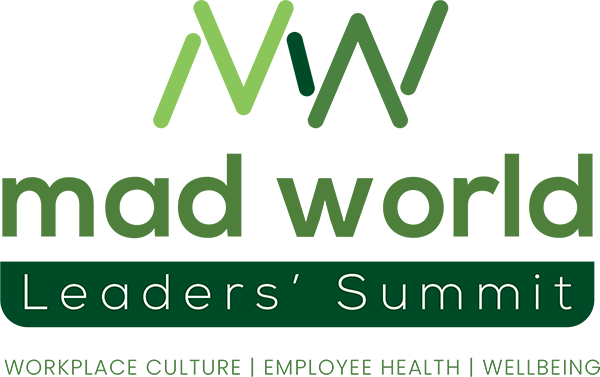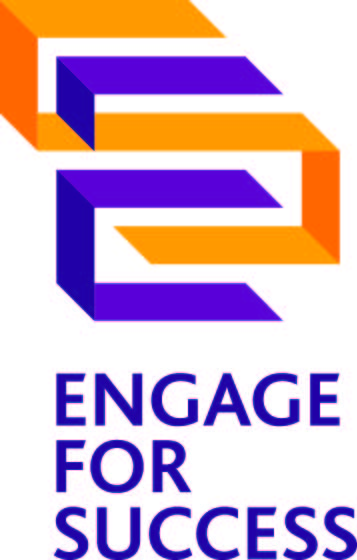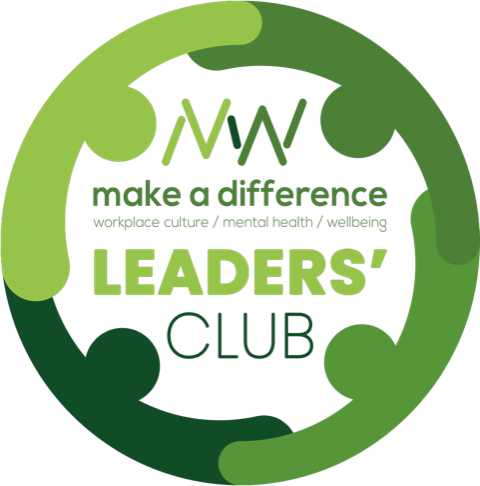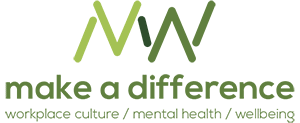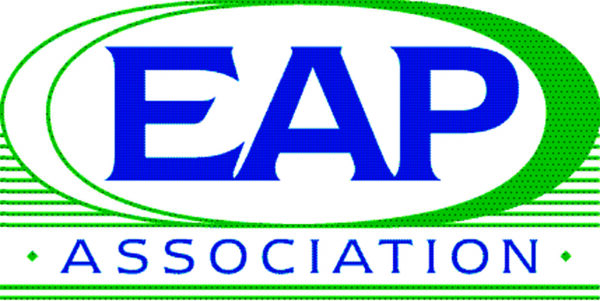2025 Speakers

Dame Carol Black GBE

Dr Monika Misra


Marc Molloy


Paula Stannett


Dr Richard Peters

Dr Shriti Pattani OBE
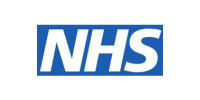

Tom Kegode

Chloe Muir
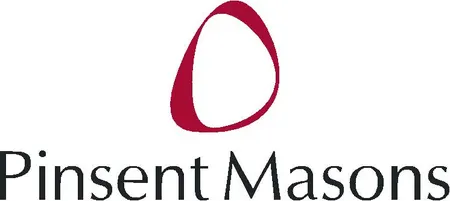

Charles Alberts


Gethin Nadin


Dr Lia Ali

Arti Kashyap-Aynsley
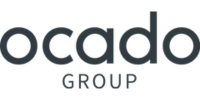
The 8th Annual MAD World Summit
Rethinking work, reimagining engagement, reinforcing health & wellbeing
Since launching in 2018, the MAD World Summit has been at the forefront of redefining employee health and wellbeing. In 2025, we’re going even further. This year, MAD World brings together four powerful tracks in one transformative day — built to break silos, spark cross-functional collaboration, and align workplace culture, employee health and wellbeing with business strategy.
As organisations adapt to ongoing change — from economic pressure to shifting employee expectations — the focus is no longer just on why health and wellbeing matters, but on how to make it work as a strategic lever for engagement, growth and performance. Senior leaders across functions are now asking:
- How do we move from fragmented efforts to integrated strategy?
- How do we focus on delivering measurable outcomes and ROI?
- How do we design work to support people — and enable performance?
“From strategic insights to practical takeaways, sessions are carefully curated to help you navigate uncertainty in an increasingly volatile world, support your people more effectively, and unlock their full potential—now and into the future”.
Claire Farrow, Global Head of Content, Make A Difference
Topics we’ll be addressing include:
- Debate: Employee health and wellbeing – strategic imperative, moral mandate or both?
- Keeping Britain working: The employer’s role in shaping a resilient economy through prevention, retention, early intervention and rapid rehabilitation
- Power in Alignment: How CHROs, CFOs and CIOs are collaborating to make health and wellbeing a business driver
- Leading through change: Supporting employees’ health and wellbeing through uncertain times
- Future-proofing health benefits: Focusing on prevention to manage rising costs without compromising care
- Navigating AI Disruption: Protecting employee health and culture in a tech-driven future
- Emerging health risks and how employers can prepare to maintain business resilience
- EAPs in a VUCA world – are they fit for purpose?
- Unpacking Psychosocial Risk: What’s driving it – and what employers must change
- DE&I in the new world order: Building workplaces that support everyone’s health and potential
- Future-proofing talent: Integrating health, wellbeing and skills development in a multi-generational workforce
- From Insight to Action: How the legal sector can lead with a data-driven approach to supporting mental health, wellbeing and culture
- Miscarriage to menopause: are workplaces failing women?
- The strategic advantage of a financially fit workforce
And more.
The MAD World Summit will bring together senior decision-makers from HR, Finance, Benefits, DE&I, Health & Safety, L&D, Culture, Occupational Health, and Communications — all committed to integrating health and wellbeing into the core of how business gets done.
Wherever you are on your journey, join us for the UK’s leading B2B event for workplace culture, health and wellbeing. You’ll leave with the tools, connections and confidence to make wellbeing strategy a business advantage — not just a business case.


We'll Be Sharing
Latest Make A Difference News

Every leader faces moments that test both confidence and care. These can be when a colleague shares something personal, when performance is of concern or when tension quietly builds within the team. These moments can feel uncomfortable, unpredictable and full of emotion. Yet they are pivotal as they can impact trust, culture and leadership credibility from both a positive and negative perspective.
Sensitive conversations are where empathy meets accountability. They are a leadership discipline that underpins wellbeing, inclusion and sustainable performance.
This article explores why sensitive conversations matter and how leaders can approach them with both confidence and care. You will discover a simple, structured framework using the Situation–Behaviour–Impact (SBI) model to help you navigate challenging discussions while maintaining trust, clarity and care – plus practical steps to prepare, lead, and follow up effectively.
The cost of avoidance and the value of connection
It’s human nature to avoid discomfort. Many leaders admit to delaying tough conversations, hoping things will “settle down.” But silence is rarely neutral, in fact its volume is turned to maximum as it sends a message of its own.
Avoidance behaviours such as delay, deflect, downplay or ignoring can lead to:
- Rising employee stress, confusion, and resentment
- Loss of trust and psychological safety
- Missed opportunities to offer support early
Research consistently shows that avoiding or mishandling difficult conversations has measurable costs. The CIPD (2023) found that unresolved conflict and poor-quality relationships are key workplace stressors, undermining wellbeing, belonging and productivity. Similarly, Bravely’s 2023 “Conversation Gap” report revealed that 70% of employees avoid difficult conversations and more than half try to ignore toxic issues, a pattern strongly linked with declining engagement and reduced organisational trust.
Meanwhile, studies by De Dreu et al. (2022) demonstrate that conflict avoidance or poor communication patterns correlate with increased burnout and psychosomatic health complaints. In contrast, constructive, early dialogue significantly reduces those risks by rebuilding clarity and control.
When leaders address issues with clarity and compassion, they don’t just solve problems they create connection. When people feel heard, respected, and supported, even when challenged, they’re more likely to stay engaged, take ownership and grow.
And yet, having sensitive conversations don’t have to be complicated. There are several tools that can help us unlock the benefit and forge stronger and healthier work relationships.
A framework for confidence and care
Prepare with care → Talk using SBI → Follow up and support
1. Prepare with care
Don’t just dive in — prepare with intention.
Before you have the conversation spend some time preparing:
- Clarify your purpose: What outcome are you hoping for from the conversation?
- Know your facts: Gather relevant details and policies.
- Choose the right setting: Privacy and time matter.
- Check your mindset: Aim to understand, not to blame.
Preparation isn’t about scripting, its about grounding and having clarity. The calmer and clearer you are, the safer and more intentional the conversation feels.
2. Talk using the SBI Model (Situation – Behaviour – Impact)
Once you’re in the conversation, the how matters as much as what you say. The SBI model, developed by the Center for Creative Leadership, helps you stay factual, neutral and empathetic. Underpinning your conversation with a model such as this will give you confidence within the situation.
S – Situation: Be specific about what happened and when.
Example: “During the team meeting yesterday…”
B – Behaviour: Describe what you observed, focusing on facts, not personality.
Example: “You interrupted me a few times while I was sharing the project update.”
I – Impact: Explain how it affected you, the team, or the work.
Example: “It made it difficult to share key information, and I’m concerned it could cause confusion for others.”
Why it works:
- Keeps feedback neutral and reality-based
- Encourages shared accountability over blame
- Builds trust by staying constructive and curious
Recent research supports this need for structure. A 2024 study published in Benchmarking: An International Journal found that poorly managed behavioural conflict significantly reduces wellbeing through heightened emotional strain and negative affect. Structured, respectful communication, such as the SBI approach, helps prevent these emotional or defensive responses by grounding feedback in observable facts. It also gives you confidence in the situation!
3. Follow up and support
A single conversation rarely resolves everything. What happens next defines whether the conversation builds or breaks trust.
Afterwards:
- Summarise the key points and agreed actions
- Document appropriately, this helps to clarify expectations and protects everyone involved
- Check in again within a few days
If the topic feels complex or emotional, seek HR or wellbeing support early. Leadership doesn’t mean doing it alone.
A Harvard Business Publishing report (2023) warns that leaders who remain silent or “neutral” in moments of tension are often perceived as less trustworthy than those who address issues directly, even when opinions differ.
Putting it into practice: turning a difficult moment into a trust-building one
Scenario: A team member, Sam, has seemed disengaged — quieter in meetings and missing deadlines — and it’s starting to affect others.
Prepare: You clarify your intent — to understand the situation, not reprimand. You choose a private setting and check your own assumptions.
Talk Using SBI:
- Situation: “I’ve noticed over the past two weeks you’ve been quieter in meetings.”
- Behaviour: “You’ve also missed a few deadlines, which isn’t like you.”
- Impact: “I’m concerned this might be causing extra pressure on the team and on you.”
Sam opens up about feeling overwhelmed after a workload change. Together, you explore adjustments and support options.
Follow Up: You check in a week later — not to monitor, but to see how Sam’s doing. That consistency signals care, not control, and reinforces trust.
Leadership takeaways: confidence, clarity, and care
- Start early. Address signs of tension or disengagement before they grow.
- Balance empathy with clarity. Kindness without boundaries creates confusion; clarity without empathy creates fear.
- Use the SBI model. Structure doesn’t remove the human aspect in fact it increase it and gives you confirmed as a leader.
- Listen to understand, not to reply. People remember how you made them feel.
- Follow through. One good conversation, revisited with care, builds lasting credibility.
Building organisational confidence: embedding these skills into culture
For leaders and organisations seeking to shift culture, developing confidence in sensitive conversations can’t rely on individual goodwill alone. Confidence needs to be built into how the organisation leads, learns and connects.
In times of uncertainty and change, these skills become even more critical. When people are unsure about what’s happening or anxious about the future, silence can quickly breed fear and disengagement. Equipping leaders to have open, compassionate and timely conversations creates stability, trust and psychological safety. All of which are foundations of resilience and performance.
Practical steps can include:
- Normalise feedback: Make open dialogue a regular dynamic within the team, not only given as a reaction to problems.
- Training for managers and peers: Equip people at every level with tools like SBI and active listening to ensure consistency of approach.
- Create psychologically safe spaces: Encourage curiosity over judgment and recognise those who demonstrate empathy and accountability in action.
- Embed in change communication: Integrate these skills into leadership development, change management and wellbeing strategies so conversations remain honest and supportive, even in difficult moments.
- Align systems and leadership frameworks: Embed these expectations into performance, development and leadership standards.
When leaders model these skills, and organisations reinforce them through systems and culture, difficult conversations become a strength rather than a stressor. They turn uncertainty into understanding and change into opportunity, creating workplaces where people feel safe, valued and ready to perform at their best.
Leader’s reflection: a conversation worth having
What’s one conversation I’ve been avoiding — and what might shift if I approached it using the SBI model with both clarity and compassion?
Sensitive conversations aren’t about having perfect words, they are about showing up with courage, empathy and consistency. That’s how we turn hard moments into defining ones for ourselves, our teams and our culture.
Every conversation is a chance to model the culture you want to create.
About the author
Davina Jenkins is a Workplace Wellbeing Delivery Consultant at SuperWellness, helping organisations move beyond wellbeing as a standalone initiative — embedding it into the everyday culture of how people work, lead, and connect.
With over 25 years’ experience in leadership and team development, and a foundation in CIPD HR practice, Davina brings a deep understanding of how culture, behaviour and systems interact. She designs and delivers strategic, evidence-based programmes that empower leaders and employees to create environments where people feel safe, supported and inspired to perform at their best.
Her current work includes Leading Through Uncertainty — a culture change programme for senior leaders — alongside initiatives on Psychological Safety, Menopause Awareness, and Wellbeing Champion development. https://superwellness.co.uk/supporting-employee-wellbeing/for-senior-leaders/leading-through-uncertainty/
Davina believes that when organisations invest in the culture itself — not just the people within it — wellbeing becomes a natural driver of performance, engagement and long-term success.
References
- Bravely (2023). The Conversation Gap Report. Forbes Coaches Council.
- Center for Creative Leadership (CCL). Situation–Behavior–Impact (SBI)
 Feedback Model.
Feedback Model. - CIPD (2023). Managing Conflict in the Workplace.
- De Dreu, C.K.W., van Dierendonck, D., & Dijkstra, M. (2022). Conflict at Work and Individual Well-Being. ResearchGate.
- Edmondson, A. (2019). The Fearless Organization. Wiley.
- Harvard Business Publishing (2023). Difficult Interactions: Silence, Trust and Leadership Learning.
- Sapien Labs (2024). Work Culture and Mental Wellbeing Rapid Report.
- Benchmarking: An International Journal (2024). Behavioural Conflict and Employee Well-Being.
- SuperWellness (2025). Free Workplace Wellbeing Events.

Sensitive conversations: how to lead with clarity, compassion and confidence
Last week, the mental health charity Mind launched its Big Mental Health Report. A piece of work designed to provide a comprehensive and up-to-date annual picture of mental health across England and Wales.
You can read the full report and recommendations here: https://www.mind.org.uk/about-us/our-policy-work/the-big-mental-health-report/
It’s no secret that the number of people struggling with their mental health is rising fast and last year’s inaugural report backed that up. It painted a picture of a decade-long decline in mental health and growing pressure on services. This year’s report shows that those trends are continuing.
The report draws on the experiences of over 18,000 people with lived experience of mental health problems. Some of the key findings include:
- 1 in 3 surveyed (33%) felt their mental health problems weren’t serious enough to seek support from their GP – young people (50%) were more likely to feel this way than adults (28%). Just under 1 in 3 (29%) felt their problem wasn’t serious enough to seek support from the voluntary/third sector.
- Over 1 in 3 (34%) reported having been treated unfairly when receiving support from their GP, and 1 in 5 (19%) when receiving voluntary/third sector support.
- Understanding of mental health is slipping and attitudes are becoming less accepting, with conditions like schizophrenia continuing to be misunderstood.
The report sets out recommendations across four areas to help create a mentally healthier society:
- Improve timely access to quality mental health support
- Support young people with their mental health
- Tackle mental health stigma and discrimination
- Deal with the social factors affecting mental health
Mind stresses that this report is more than a collection of data – it’s a rallying call to us all to play our part in ensuring mental health does not become a casualty of cynicism or culture wars. Mind also points out that while we’ve seen welcome policy developments in England and Wales, progress is too slow.
They believe that the recommendations set out in this report – which are as relevant to employers as they are to individuals – will help us create a mentally healthy society that leaves no mind behind.
They hope that this report arms you with the insight and evidence to demand better – and to act.
You can read the full report and recommendations here: https://www.mind.org.uk/about-us/our-policy-work/the-big-mental-health-report/

Mind launches its Big Mental Health Report
At the Mad World Summit 2025, 95% of delegates believed wellbeing impact should be measured. If “wellbeing impact” means different things to HR, ESG, Finance and Operations, the harder question remains: measuring what, exactly?
Where to start?
Start with the employee. Employees and their health is an organisation’s most valuable asset; work shapes health and health shapes work. But which outcomes matter most for both the employee and the organisation?
- Employee health outcomes might include existing health challenges, mental wellbeing, sleep sufficiency, musculoskeletal pain, memory, concentration and more.
- Business outcomes could track error rates, safety incidents, absence, presenteeism, retention and performance variation.
To move forward, does there need to be standardised metrics, timeframes and units of analysis applied consistently?
If definitions stabilise across both health and business outcomes, does trust follow?
Would alignment look the same everywhere?
Should construction, finance, manufacturing, education and retail all report identical metrics? Maybe.
Can they report within the same core framework so results are comparable? Probably.
What if wellbeing were anchored to the biopsychosocial model for every employee, then layered on sector and business specific indicators – safety risk, remote working, shift work? Human constants stay fixed; sector and business nuances adapt on top.
What would make wellbeing data trustworthy?
Boards trust financials because they’re comparable, repeatable and auditable.
Could wellbeing data reach that standard if the industry were aligned on one framework, where interpretation varies by business function but the measures stay fixed?
What would that require?
- Consistent, standardised measures across the organisation
- Clear evidence linking wellbeing to business performance
- Independent verification or external benchmarking
- Privacy and governance safeguards strong enough to earn participation
- Stakeholder motivation to act on insights
Does trust require all of these, held together by shared definitions? That’s one hypothesis worth testing.
Do robust measurement tools already exist?
Yes. While health and wellbeing are complex, the industry is not starting from scratch. Robust, validated instruments already exist and are widely used at national and research levels, but not regularly or consistently at organisational level or connected to business specific operational data.
The challenge isn’t inventing new measures. It’s aligning on what to measure, which measurement tools to use and committing to measure the same things in the same way within and across individual organisations. Perhaps the task is simply to align and begin.
What if a workable standard included:
- One core model using a biopsychosocial lens, tied to work design and mapped to board-level outcomes
- Validated instruments plus operational data to move from sentiment to causality
- Comparability by default, aligned to internal and external benchmarks
- Governance—privacy and compliance controls
- Action loops so results trigger decisions, not just reports
These aren’t answers. They’re starting points to pressure-test together.
What happens next
As a selected member of Yorkshire and the Humber’s Springboard for Female Health Innovators – sponsored by Nexus and AWS – we are convening a virtual roundtable with regional and national leaders on ‘The Future of Employee Wellbeing: Measurement and Impact’ to help define what credible wellbeing measurement requires.
We’ll focus on definitions, current gaps, the investment case and what it takes for wellbeing data to be board-grade.
This session is designed for senior decision-makers accountable for workforce health and performance – typically CPOs or HR Directors, Wellbeing and Occupational Health Leads, ESG or Sustainability Heads, limited to 15 participants and focused on evidence, governance and real-world adoption.
If you are interested in joining this roundtable, please email niamh.sullivan@parachutebh.com.
About the author:
Niamh Sullivan is CEO and Co-founder of Parachute – a health analytics company helping leaders quantify the real cost of poor workforce health, decode what’s driving it and evaluate whether current benefits are delivering ROI. Parachute doesn’t sell programmes – just provides the data you need to make sharper decisions.

Measuring wellbeing impact: can we agree what it means?
Awareness of neurodiversity in the workplace is growing, but awareness alone won’t remove the barriers that many colleagues still face.
According to MindView’s Your Voice Matters survey, 75% of neurodivergent employees don’t disclose their condition due to stigma, while over half report communication barriers and retention challenges.
At the same time, the research highlights the power of practical solutions.
Navigating neuroinclusion
If you’ve recognised the need to create a neuroinclusive workplace but are looking for ideas and best practice on how to achieve this, join us on Wednesday 19th November from 12.00pm – 1.00pm for this Make A Difference Webinar together with MatchWare.
We’ll be exploring how employers can go beyond surface-level initiatives to build workplaces where employees feel understood, supported, and able to thrive including:
- What it really means to create a neuroinclusive workplace – and why stigma and silence remain such significant barriers
- Practical support options, from assistive technology to employee resource groups, and how to signpost external help when waiting lists are long
- How to balance EDI and wellbeing, embedding neurodiversity into culture without trying to “fix” differences
Including expert insights from:
- Matthew Jones, Enterprise Account Manager, MatchWare
- Julie Dennis, Head of Inclusive Workplace Strategy & Policy, Acas
- Plus another panel member to be confirmed
Who should attend:
- C-Suite, HR, Wellbeing, DE&I and Occupational Health Leaders
- Benefits & Rewards, Talent, Engagement and Communication Leaders
- Culture & Transformation Leaders
- Managers, Team Leaders, ERG Chairs & Wellbeing Champions
- Anyone committed to building inclusive and high-performing workplaces
Find full details and register free here.
You might also like:

New webinar – unlocking potential: embracing neuroinclusion
One of our core missions at Make A Difference Media & Events is to use the collective power of our network of employers to influence the workplace culture, employee health, and wellbeing supplier landscape. We want to make it easier for you to navigate this space – to find credible suppliers and gain the knowledge you need to get real value from them.
We began this work with insights shared during a workshop at The Watercooler Event, featured in the article “Navigating the Maze: Shaping the Supplier Landscape with Our Collective Employer Voice.” We’re also driving this forward through the Make A Difference Suppliers’ Guide.
The conversation continues in this week’s episode of The Leaders’ Podcast, where Karen Sancto, EMEA Benefits Consultant at Microsoft, shares her expertise on getting the best out of suppliers – particularly when balancing long-term partners with newer, agile tech start-ups entering the wellbeing space.
She offers practical, instantly usable advice and, in an increasingly automated world, underlines the enduring importance of human relationships.
Listen right to the end to catch all of her strategies – and her answer to Suzy’s famous “alien question”!
Key points Karen addresses include:
- Approaches to effectively navigating supplier relationships
- Navigating data privacy
- Building effective partnerships
- Cultural considerations in supplier management
- Measuring and scaling supplier management
- The human element in supplier relationships
- Fun and creativity in benefits management
- Final tips and call to action
You can find out more about our Make A Difference Leaders Podcast here and download the podcast episode from your favourite podcast platform or from Spotify here:
You might also like:

New Leaders’ Club Podcast: How do I get the BEST out of my suppliers? With Microsoft’s Karen Sancto
Workplace mental health has never been higher on the corporate agenda – and yet, paradoxically, it’s never been harder for employees to access meaningful support.
Across the UK, more people are recognising the importance of mental wellbeing and actively asking for help. But while the desire for support is growing fast, usage of traditional Employee Assistance Programmes (EAPs) is actually declining.
The question isn’t whether employees want support – it’s why they’re not using what’s already available.
The growing disconnect
Employees are increasingly open to talking about mental health, but the systems meant to help them haven’t evolved quickly enough.
In many workplaces, counselling is still tied to legacy EAP models – services that were designed decades ago for a different era. These schemes often promise comprehensive support but, in practice, can feel remote, bureaucratic, or hard to access.
When someone finally decides to reach out, they may be met with long waits, limited availability, or impersonal call centres. For employees under pressure, that first negative experience can be enough to turn them away for good.
Why employees hold back
Even when help is technically available, there are invisible barriers that stop people from using it.
Stigma still lingers. Many employees worry that asking for counselling could be seen as weakness, or that their confidentiality might be at risk. In cultures that prize resilience and performance, admitting to struggling can feel unsafe.
Accessibility plays a part too. If support can only be accessed during office hours, or through a complicated referral system, uptake will always stay low. Employees want services that meet them where they are – flexible, private, and immediate.
And then there’s trust. Some EAPs turn people away if their issue doesn’t meet a certain “threshold”, which can leave staff feeling judged or dismissed. It’s no surprise that employees quickly lose faith in systems that don’t feel human.
The EAP model is showing its age
EAPs were originally designed for short-term, low-intensity support – typically a handful of sessions to manage everyday stress or family issues. But the landscape of mental health at work has changed dramatically.
Today’s challenges are far more complex: burnout, anxiety, trauma, neurodivergence, and the effects of chronic stress. These are not issues that fit neatly into pre-set call quotas or generic talking scripts.
For organisations, there’s another issue: cost without clarity. Traditional EAPs are usually subscription-based, meaning companies pay annual fees regardless of whether employees use the service. In some cases, the utilisation rate is as low as 5%. That’s a lot of money for something few employees trust enough to use.
A more human, flexible alternative
Progressive organisations are starting to rethink their approach, moving toward in-house and on-demand counselling models that are genuinely accessible and responsive to employees’ needs.
At Wellbeing Partners, we’ve seen that when counselling is brought closer to the workforce – and delivered by trusted, consistent professionals – engagement rises dramatically.
Our model assigns each organisation a small, dedicated team of experienced, BACP-registered counsellors who work with employees both in-person and online. The focus is on relationships, trust, and flexibility – not transactions.
Because it operates on a pay-as-you-use basis, organisations only pay for what is actually used, rather than for unused capacity. The result? Better access, better value, and more meaningful outcomes.
What actually works
Here’s what we’ve learned about making workplace counselling genuinely effective:
- Familiar faces build trust. When employees see the same counsellors regularly – professionals who understand their work culture – they are more likely to engage and return.
- Flexibility matters. Being able to access sessions remotely, outside standard hours, or from a private space makes support feel achievable.
- No “thresholds” for care. Whether it’s mild stress or acute trauma, every concern is valid. Employees shouldn’t be turned away because they don’t tick the right box.
- Prevention, not just reaction. The earlier someone can access support, the less likely their issues are to escalate into crises.
These are small shifts, but together they create an environment where employees actually want to seek help – not one where they feel they have to.
Culture comes first
No model will work if organisational culture doesn’t support it. Leadership visibility and communication are essential.
When senior leaders talk openly about their own wellbeing, it sends a clear message that seeking help is normal and supported. Likewise, transparency about confidentiality – how sessions work, who has access to information – builds trust from the ground up.
The ultimate goal is psychological safety: an environment where employees know they can reach out without judgment or repercussion.
Rethinking what “support” means
The world of work has changed. Hybrid models, cost-of-living pressures, social isolation, and rising burnout levels mean that mental health support can no longer be treated as a tick-box benefit.
We’re at a turning point. The future of workplace wellbeing lies in accessible, human-centred support that employees can actually use.
If employers can modernise their approach – replacing distant EAPs with flexible, relational counselling models – they’ll not only protect wellbeing but also strengthen engagement, loyalty, and performance.
Because when mental health support works, everyone wins.
About the author:
James Milford is Head of Behavioural Sciences at Wellbeing Partners, specialists in workplace counselling and mental wellbeing solutions.
You might also like:

Bridging the gap: why workplace mental health support isn’t keeping up with employee demand
Have you ever experienced imposter syndrome? That is, the persistent feeling of self-doubt and fear of being exposed as a “fraud,” despite clear evidence of competence, achievements, or success. If you have, you’re not alone – many of us struggle with it for one reason or another.
In this episode of the Leaders’ Podcast, Matt Wilson, UK Wellbeing Lead for Computacenter, talks candidly about the crisis of confidence he overcame while working in the wellbeing industry. At times, he felt insecure not only because he didn’t come from a traditional HR background, but also because he suffered from a severe stammer.
He talks with refreshing honesty about his experiences and gives practical advice to anyone else experiencing any kind of confidence issues that are affecting work.
While his tips are applicable to everyone, his insight is particularly relevant to men who find it hard to talk about emotions or their struggles. He tells his story of how, after taking action, he ends up with more self-awareness and confidence, as well as a commitment to being authentic at work.
With Suzy’s encouragement, Matt talks us through:
- Navigating wellbeing without an HR background
- Overcoming a stammer and building confidence
- The importance of authenticity in wellbeing roles
- Men and therapy: breaking the stigma
- Proving the ROI of wellbeing initiatives
- The role of commercial skills in wellbeing
- The need for formal training in wellbeing
- Final words of advice for wellbeing professionals
And, as always, don’t miss Matt’s unique answer to Suzy’s signature “alien question.”
You can find out more about our Make A Difference Leaders Podcast here and download the podcast episode from your favourite podcast platform or from Spotify here:
You might also like:

New Leaders’ Podcast episode: Gulp! – I’ve got imposter syndrome, what do I do? With Computacenter’s Matt Wilson
At our recent webinar sponsored by Lyra Health, 87% of attendees said in the warm-up poll that colleagues are expressing growing concern about their children’s or young people’s mental health. A further 57% cited difficulty navigating existing services and pathways as the biggest barrier to unlocking access.
With demand at such a high level, it’s no wonder the webinar panel was inundated with questions from the audience.
Here, Dr Catherine Mckinven, Lyra Health’s Clinical Lead Psychologist UK and ROI and Karin Scott, Clinical Case Manager, Lyra Health UK & Ireland, share answers to your questions.
You can access the recording of the webinar here.
Q1: What was the study that Catherine refers to in her introduction / who did it?
The two studies referred to were:
- NHS England , The Mental Health of Children and Young People in England 2023
- The Big Mental Health Report , Mind 2024.
Q2: Can parents access the service of Lyra individually?
Yes, parents can seek support as individuals through their Lyra benefit.
Q3: If I am not wrong, all these case studies feature girls. What do we know about boys these days? How easy will they open up about their struggles?
According to research, girls are more likely to express emotional distress and seek help, talk to friends etc. Boys tend to display behavioural difficulties which often masks underlying emotional distress. This gap widens in adolescence. They are also impacted by societal views around traditional masculine traits which prevents open communication about these difficulties and seeking help.
Q4: But is there a difference between how girls and boys cope with mental health issues?
Yes, boys are more external in terms of behaviour and emotion and so often display anger, aggression etc. Girls experience more internalised thoughts and feelings and so may be more prone to low mood. Hormonal changes impact this as well as social expectations about how these emotions are expressed. For instance, boys may appear less vulnerable.
Q5: In your first case study, were the recommended 8 sessions used or more, as the core 10 score after just 8 sessions is very good
Excellent progress was made. YP had a good relationship with her counsellor and I think that the timing of the support was key.
Q6: Have you seen a rise in reliance on AI chat friends and what are your thoughts about these tools?
This is not something that we’ve noted in our service, but are aware that it has been reported that there is greater utilisation by young people, reaching out to AI chat friends, and this is becoming a trend. The main motivation appears to be related to combatting loneliness and for companionship.
Part of the appeal for both adults and young people using AI companion apps is the draw of a space that is non-judgemental which makes it easier to disclose. AI is still in it’s infancy and while it has scope to be very helpful, we need to be mindful that it doesn’t always mirror the nuances that take place in human interactions and can then create unrealistic expecations as to how human relationships should function.
There needs to be a balance between using AI appropriately and still supporting young people to develop the skills to be able to interact with other humans, which includes navigating the difficulties and challenges with these relationships. The main danger would be when someone becomes over reliant on this form of communication at the expense of other relationships and friendships. In these instances this can lead to further isolation and disconnection from human experience.
Q7: Do you feel that the food children are eating and drinking has contributed to the Mental Health of young people? As brain health and gut health are so closely linked.
Yes loads of research continues to come out about this because of the gut-brain connection suggesting poor diet links to increased chance of anxiety and depression. This is mainly due to lack of specific nutrients needed for brain function. These are found in healthy foods like fruits and vegetables and less in processed foods. Research from the University of East Anglia states that children eating more fruit and vegetables – especially 5 portions a day or more – demonstrated higher mental wellbeing, including ability to concentrate and focus on learning, better mood. You can’t look at this in isolation though as we know there are many variables in the causes of mental health.
Q8: What kind of therapies do you provide?
We provide integrative goal orientated counselling and offer clinically matched care with a therapist best suited to match clinical needs based on our therapeutic assessment.
Q9: My 6 yr old daughter is becoming very anxious, I think it might be more than just usual 6 year old worries. She is so worried about not fitting in and has even said she is ugly or fat. I need to nip this in the bud before it becomes a big issue, where I can I get some advice?
Contact Youngminds.org for resources and you can call their parent helpline on 08088025544. They have opening times on the website. There is also some helpful advice in particular for 6-12 years olds using PACE approaches for parents at riseuk.org.uk.
Please also speak with your GP or school if you are concerned.
If you would like to speak to Lyra regarding any queries relating to the Children & Young Person support, please contact Lyra’s Global Customer Success Manager, Lewis Mode (lmode@lyrahealth.com).
Q10: How does Lyra’s service integrate with existing provision? ie. what’s the next step if people think this is a great service, we want our employer to offer it? What do they need to know to move that forwards?
Our goal is to make integrating Lyra both seamless for your organisation and simple for employees to use, get accustomed to, and champion. We are designed to be a collaborative partner, enhancing your existing wellbeing strategy, not replacing it.
Lyra is designed to function as a collaborative hub within your existing wellbeing ecosystem. We ensure a “no wrong door” approach for employees, making their journey to care smooth and straightforward. Here’s how:
- Collaborative Referral Pathways: We work closely with your organisation to establish clear and confidential referral pathways between Lyra, Occupational Health (OH), Private Medical Insurance (PMI), and any other existing support services. This ensures that if a member’s needs are better served by another part of your benefits package, we can facilitate a warm and seamless handoff.
- Complementary, Not Competitive: We fill the critical gap for accessible, high-quality mental health care. Rather than overlapping, we enhance your current provision by offering an easy-to-access front door for mental health, which can reduce the burden on Human Resources, Occupational Health and Management teams.
- Strategic Communications Partnership: Upon launch, we partner with your team to create a tailored communication plan. Using co-branded tailored materials and targeted messaging, we ensure employees understand the full spectrum of support available to them and how Lyra fits into the wider benefits landscape.
- Informing Overall Strategy: The anonymised insights from Lyra’s reporting provide valuable data that can inform and enhance your overall wellbeing strategy, helping you identify trends and proactively address the needs of your workforce.
What’s the Next Step to Bring Lyra to Your Organisation?
- Facilitate an Introduction: The most effective next step is to connect your Human Resources or benefits leader with Lewis Mode (lmode@lyrahealth.com). We would be delighted to provide them with a tailored demonstration to showcase exactly how Lyra can support your organisation’s unique needs. You can direct them to our website or offer to make a direct email introduction.
You might also like:

Supporting working parents by unlocking access to mental health pathways for children and young people – your burning questions answered
October is Menopause Awareness Month, a crucial time for workplace leaders to focus on a topic that impacts nearly every organisation. While often viewed as a personal issue, menopause has a profound effect on the workplace, touching your most experienced employees and, ultimately, your bottom line. An estimated 13 million people in the UK are currently going through perimenopause or menopause. With women making up nearly half of the UK workforce, this is a conversation that belongs in the boardroom, not behind closed doors.
For too long, the impact of menopause has been ignored, leading to presenteeism, absenteeism, and a preventable drain of valuable talent. But this presents an opportunity. By focusing on practical support, leaders can make a tangible difference to their people’s wellbeing and the health of their business.
The Business Case for Menopause Support
The average age for menopause is 51, a time when many women are in senior leadership roles. These employees represent decades of experience and organisational knowledge. Losing them is a significant loss of human capital.
3 in 4 women report that symptoms have negatively impacted their work, and one in ten have left a job entirely due to their symptoms. Many struggle with brain fog, fatigue, and anxiety, leading to a rise in presenteeism where employees are at work but not fully productive. Beyond the clear business case, there’s also a legal one. Under the Equality Act 2010, employers have a duty to make reasonable adjustments for employees whose symptoms amount to a disability. Proactive support is not just good practice, it’s a necessity.
A Leader’s Briefing: What You Need to Know
To provide effective support, leaders don’t need to be medical experts, but a basic understanding is crucial. The term “menopause” is often used as a catch-all, but the distinctions are important.
- Perimenopause: This is the transitional phase, which can last 4-8 years and often begins in a person’s early to mid-40s. It is during this time that the most challenging of the 34 recognised symptoms, such as hot flushes, aching joints, low mood, and sleep disturbances, tend to occur.
- Menopause: This refers to a single day, exactly 12 months after a person’s last period.
- Post-menopause: These are the years after menopause. While some symptoms can persist, this stage brings different health considerations, especially around bone density and cardiovascular health.
An Actionable Toolkit for Meaningful Support
Making a difference starts with practical, concrete steps. This year’s “Lifestyle Medicine” theme provides a powerful framework for action, emphasising the role of lifestyle choices in managing symptoms. It shifts the focus to proactive, tangible areas like nutrition, exercise, sleep, and stress management. This gives employers a clear and positive opportunity to provide support that empowers employees to improve their own wellbeing during menopause. Here are some next steps to consider:
1. Create an Open and Educated Culture: The most impactful first step is to normalise the conversation. When employees feel they can speak openly without stigma, problems can be solved.
- Action: Provide manager training focused on how to have supportive conversations, recognise when an employee might be struggling, and understand what adjustments can be made.
2. Implement Practical, Reasonable Adjustments: Small changes to the work environment can have a huge impact. These adjustments show genuine care and help employees feel supported, not singled out. They also create a culture where wellbeing is part of everyday operations rather than an afterthought.
- Action: Review your policies. Can you offer more flexible working patterns to help manage fatigue? Ensure easy access to temperature control and cold water. Re-examine uniform policies to prioritise comfort and appropriate materials.
3. Champion the Power of Physical Activity: Exercise is one of the most effective tools for managing many menopause symptoms. Regular physical activity can improve sleep, boost cognitive function, and is a recognised intervention for the low mood and anxiety that can accompany perimenopause.
- Action: Go beyond simple awareness and actively facilitate access to fitness. This is where a truly inclusive wellness benefit becomes critical.
How Flexible Fitness Benefits can help
Traditional, one-size-fits-all benefits like a single on-site gym often fail menopausal employees. Their needs are varied and can change day-to-day. One day, gentle movement for stress relief is needed; on another, it’s resistance training to combat the loss of muscle mass and bone density associated with declining oestrogen.
Flexible fitness benefits give employees the freedom to choose what works for them. Offering access to a nationwide network of different gyms, pools, and fitness centres means they can find an activity that suits their energy levels and health goals, whether at home or in the office. This empowers them to use exercise, one of the best tools available to manage their health effectively.
This October, leaders have the chance to move beyond awareness and into action. By building an open culture and providing flexible, practical benefits, you can support your employees’ wellbeing, retain your most valuable talent, and build a stronger, healthier organisation for everyone.
About the author:

As Hussle’s Head of Sales, Daisy James supports the ongoing growth of EGYM Hussle within the UK employee benefit space. She has an extensive background in corporate partnerships and business development and is incredibly passionate about helping employers to support their people through physical wellbeing initiatives. Outside of her day job, you can find her on long walks with her dog or at the gym!
You might also like:

